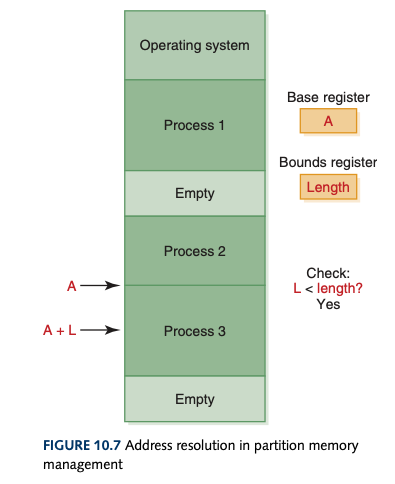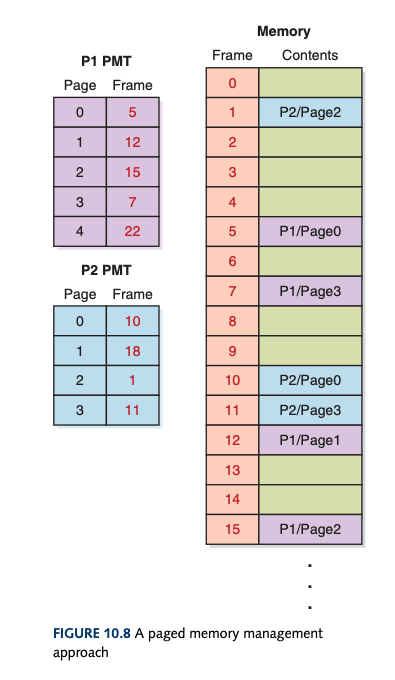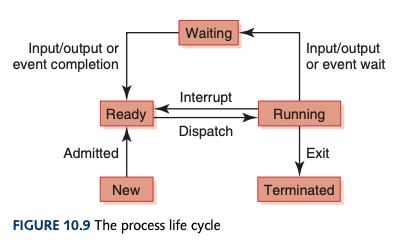Computer Science
Operating System
- Software that manages computer resources
- I/O devices, memory, etc.
- Provides an interface for system interaction
- Uses multiprogramming
- Technique of keeping multiple programs in main computer memory at the same time
- Programs compete for the CPU
- Process management
- Keeping track of information of active processes
- Progress, intermediate states, etc.
- Process
- Dynamic representation of a program during execution
- CPU scheduling determines which process in memory is given access to the CPU
Memory Management
- OS performs the following tasks:
- Track where and how a program resides in memory
- Convert logical program addresses into actual memory addresses
- Keeps track of secondary computer memory in two ways
- Maintains a table indicating which blocks of computer memory are free
- For each directory, it maintains a table that records information about the files in the directory
Single Contiguous Memory Management
- A program is loaded into one continuous area of memory
- Only one program other than the OS can be processed at one time
- Logical address --> an integer value relative to the starting point of the program
- To get physical addresses, we add a logical address to the starting address of the program in physical memory
- Simple to implement and manage
- Wastes memory space and CPU time
Partition Memory Management

- Multiple programs allowed in memory
- OS must make sure they don't access each other's memory space
- Programs are loaded into those partitions
- Base register
- Holds beginning address of the current partition
- Bounds register
- Holds the length of the current partition
- Helps ensure memory addresses are within bounds
Fixed-partition technique
- Memory is divided into a specific number of partitions
- Partition size is fixed when the OS initially boots
- Jobs are loaded into a partition large enough to hold it
- OS keeps a record of addresses at which each partition begins and its length
Dynamic-partition technique
- Memory is divided into partitions as needed
- Each partition is unique to a program
- Main memory can be viewed as one large empty partition
Paged Memory Management

- Main memory is divided into fixed-size blocks called frames
- Processes are divided pages and in frames when loaded
- Pages made me scattered around or out of order
- Pages can be mixed among other pages from separate processes
- OS maintains a page-map table (PMT) to keep track of each process
- Processes no longer need to be stored contiguously in memory
- Demand paging
- Extension to paged memory
- Pages are brought into memory only when referenced (on demand)
- Page swap
- Bringing in one page from secondary memory, possibly causing another to be removed
Process Management
- Processes move through specific states in a system

- New
- Ready
- No barriers to its execution
- Waiting for its chance to use the CPU
- Running
- Currently being executed by the CPU
- Instructions being processed in the fetch-execution cycle
- Waiting
- Waiting for resources (other than the CPU)
- E.g. waiting for user input
- Terminated
- Execution is completed
- No longer active
- Process control block
- Data structure used by OS to manage information about a process
CPU Scheduling
- Act of determining which process in the ready state should move to the running state
- Nonpreemptive scheduling
- Occurs when currently executing process gives up the CPU voluntarily
- Decisions made when a process switches from running --> waiting or when a program terminates
- Preemptive scheduling
- Occurs when the OS decides to favour another process, preempting the currently executing process


